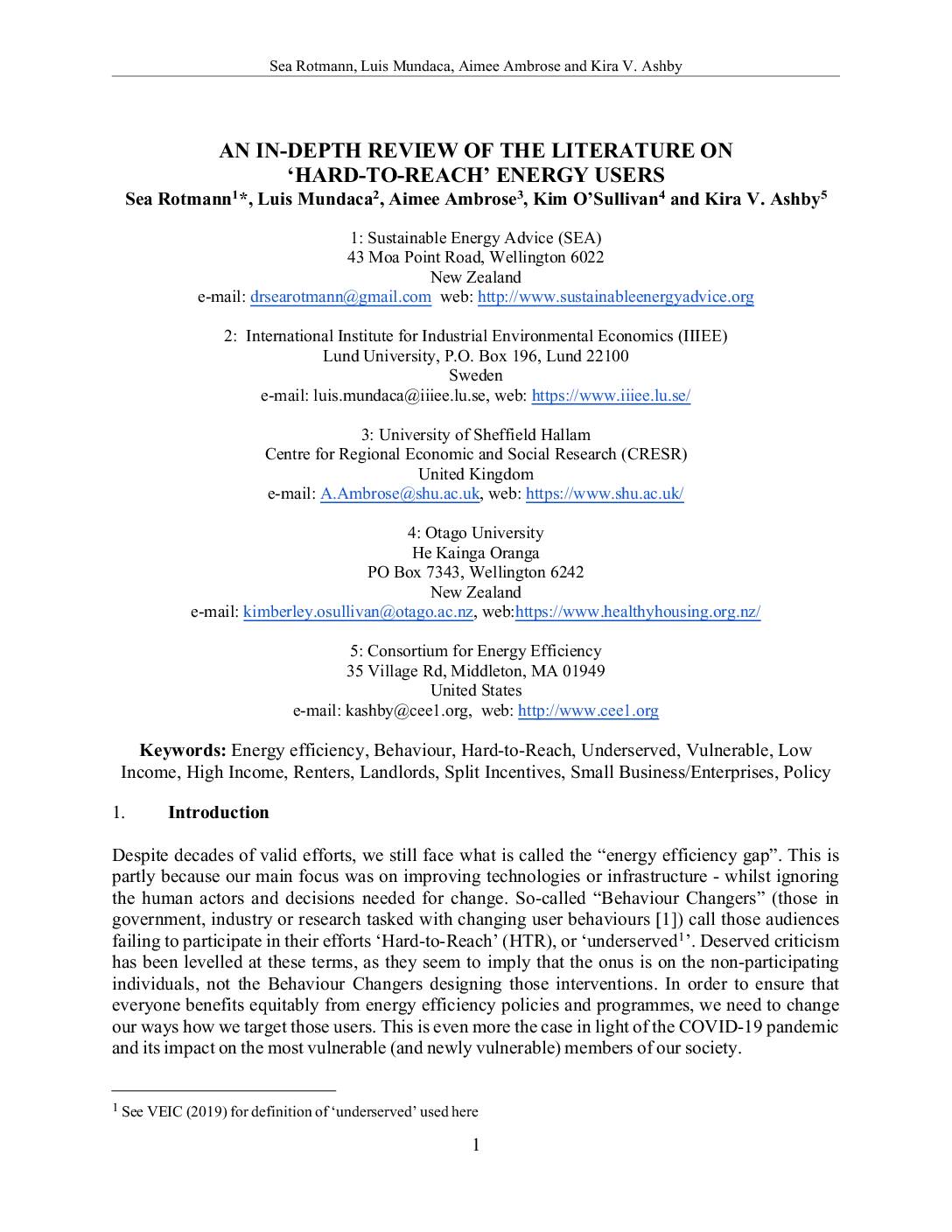Despite decades of valid efforts, we still face what is called the “energy efficiency gap”. This ispartly because our main focus was on improving technologies or infrastructure – whilst ignoringthe human actors and decisions needed for change. So-called “Behaviour Changers” (those ingovernment, industry or research tasked with changing user behaviours [1]) call those audiencesfailing to participate in their efforts ‘Hard-to-Reach’ (HTR), or ‘underserved1’. Deserved criticismhas been levelled at these terms, as they seem to imply that the onus is on the non-participatingindividuals, not the Behaviour Changers designing those interventions. In order to ensure thateveryone benefits equitably from energy efficiency policies and programmes, we need to changeour ways how we target those users. This is even more the case in light of the COVID-19 pandemicand its impact on the most vulnerable (and newly vulnerable) members of our society.
Download sourceShare this

Sector: Power sector
Country / Region: Global
Tags: behaviour, efficient energy use, energy, energy efficiency, energy policies, industry, infrastructure, lighting, projects, stakeholders, targetsIn 1 user collection: Session 1b: Hard-to-reach energy users in residential and non-residential sectors and financing
Knowledge Object: Publication / Report
Author: Sea Rotmann, Luis Mundaca, Aimee Ambrose, Kim O’Sullivan and Kira V. Ashby
Content:

